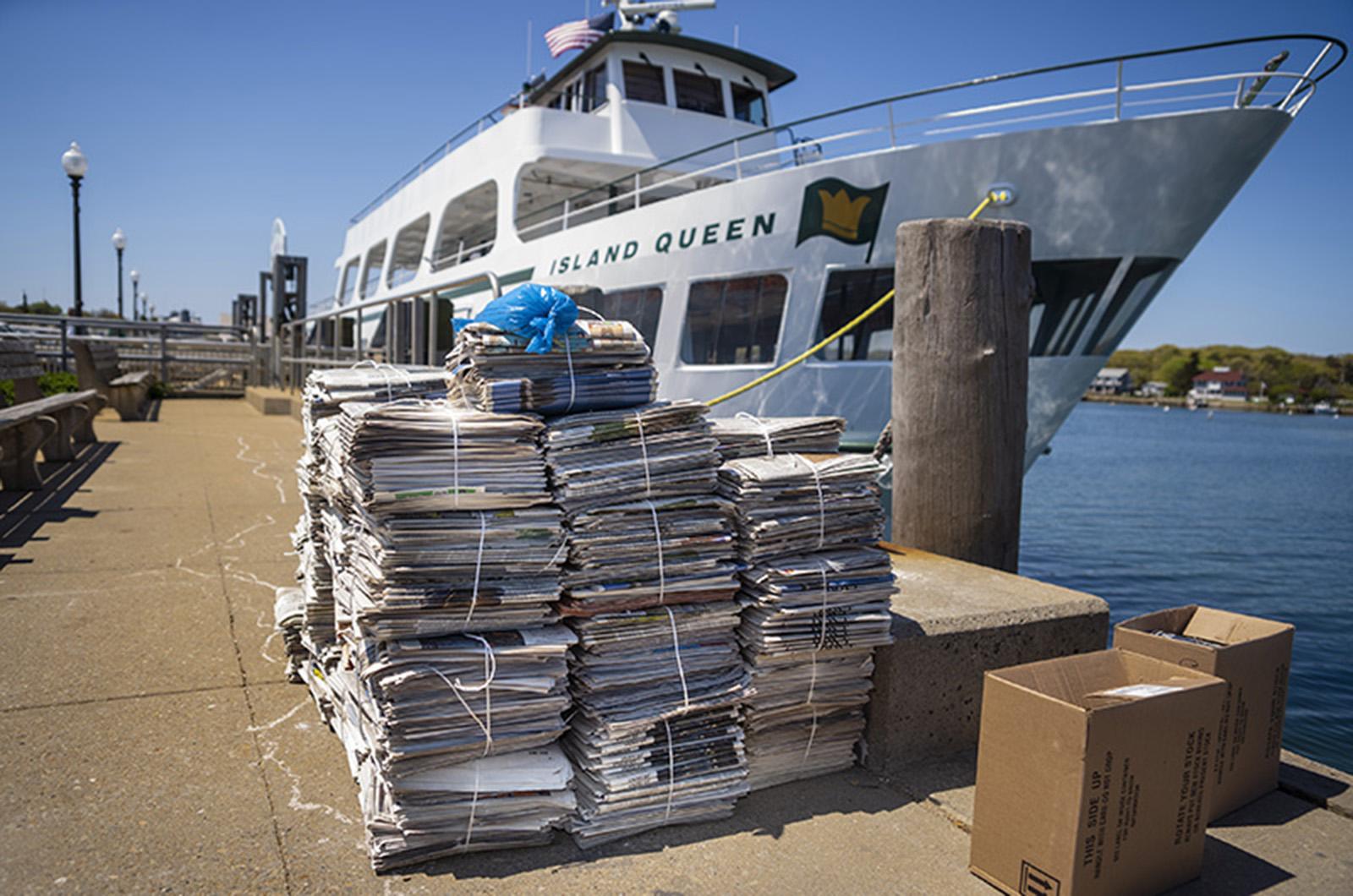I’ve asked myself often in 40-plus years as an annual visitor to Martha’s Vineyard, what is it that gives one the sensation that a place where you don’t actually hang your hat daily or pay property taxes, viscerally feels like home?
I live in Connecticut but visit the Vineyard each summer for a week. The Island vibe starts as we drive down into the Woods Hole terminal; it’s the one line I don’t mind waiting on because it promises Island time.
We’ve biked and hiked and consumed many a Mad Martha’s cone, sampled Bad Martha’s brew, sipped Espresso Love coffee in front of the Old Whaling Church as we enjoyed the early morning quiet. I say hello and give a hug each year to the enormous pagoda tree just outside Edgartown’s Harborside Inn. Believed to be the largest of its kind on this continent, the tree arrived on-Island from China in 1837 in a flowerpot for Captain Thomas Milton’s new home. Imagine that.
My children and I have hunted for treasures in Alley’s General Store, gotten a hole in one or two at the mini-golf course, captured the brass ring on the vintage Flying Horses carousel in Oak Bluff — and I hope my grandchildren will too.
I was 50 years old when I finally worked up the courage to take my first leap off the Jaws bridge and I’ll do it again when I reach 60.
So much contributes to the eclectic mix that makes the Vineyard such a unique and beloved place, from the old sea captains’ homes, the weather-worn rustic beach homes, the fishing village of Menemsha and the men who wrangle the sea for its bounty, the rich Black history of Oak Bluffs, the Native American history and culture, the lighthouses, to John Belushi’s fake and real gravesites.
During the 358 days of each year that I don’t call Martha’s Vineyard home, I read your newspapers online. I see your housing struggles, your growing pains, the arguments for and against development, the tourist and traffic issues, wind energy and casino pros and cons, some grand old homes being replaced by something bigger and not everyone agrees better.
There are concerns for seniors, students and schools, long time residents, incoming residents, employer and employee needs, airport issues, the affordable housing crisis as more affluent newcomers put down roots. The Gazette has been around for 177 years; the Martha’s Vineyard Times since 1984. These publications represent what I feel is the most valuable of media outlets, community journalism at its best.
I am intimately familiar with this form of journalism because I spent 14 years as editor, sometime photographer and writer for the small and only news publication for my hometown. We shuttered the pages in June after 30 years because of lack of enough advertising dollars — a sign of the times and an alarming trend everywhere.
The common thread in every piece of correspondence/condolence I received after the farewell announcement went public was summed up in one particular e-mail: “Oh no, how can this be saved? Where will we find all this information regarding our town gathered in one spot? This brought us all together; it was our essence! Please don’t go.”
The typical hometown publication has been, for as long as pages have been in print, a gathering place for large and. in particular, small communities and certainly Island life. News and meetings and interesting people, history and progress, our triumphs, hopes, fears and grief are shared here. We’re all bound together in the pages of these papers and that matters.
I am only a visitor to your gem of a home seven miles out from the mainland, but I have a tip that all will benefit from, this I know is true. Support your local community news sources in print and online, because once they’re gone, they’re gone.
In this age of what feels like ever-increasing division and separatism and stepping away from the small acts that make communities thrive, we can’t afford more of these losses without losing an important part of our collective selves, no matter where home actually is.
Karen Milano lives in Killingworth, Conn.




Comments (1)
Comments
Comment policy »